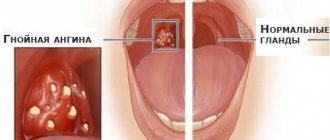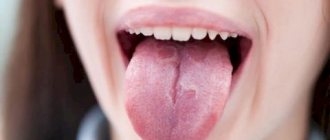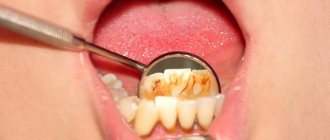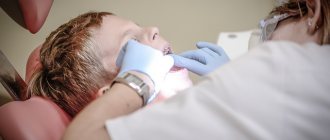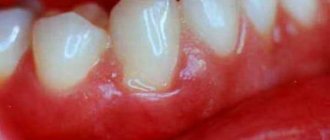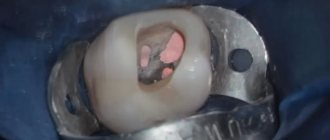A youthful smile, laughter without embarrassment or worry, eating without problems - of course, quality dentures have many qualities that can improve your daily life, especially once you get used to them. This usually takes time and patience, but you will certainly feel comfortable in the future. To help you get through this adjustment period, we'll give you some tips.
At first, you will most likely feel extremely uncomfortable when talking or trying to chew food with your dentures - new sensations have appeared, something new and strange is present in your oral cavity. Moreover, if your new denture rubs against the unusual gum and the pain from abrasions is added to the feeling of discomfort. The most important thing during this period is to quickly overcome these fears and forcefully forget that something is bothering you in your mouth. This is achieved by persistently constantly wearing a removable denture. As they say, patience and work. Removing them at night or before meals will only prolong the adaptation period. Therefore, be very meticulous in cleaning your dentures and mouth shortly before bed, but then put the new pullers back on, maybe even through the pain.
Do not be lazy to brush the remaining teeth and the mucous membrane itself in contact with the denture. Only careful hygiene will speed up the healing of abrasions. If there are two or three teeth left in the mouth, they help fix the prosthesis and facilitate the adaptation period. These teeth must be cleaned very thoroughly.
Sometimes people want to get rid of their remaining teeth. Should not be doing that. If there is no pain, let them stand their time, they promote fixation.
Causes of gum inflammation
Sore gums
The inflammatory process in the oral cavity develops against the background of several factors:
- Weakening of the immune system and proliferation of pathogenic bacteria. At risk are young children and adults who have had influenza and ARVI.
- Poor oral hygiene. Accumulated plaque provokes the appearance of caries and aggravates chronic diseases.
- Hormonal changes - surges of hormones often affect the mucous membrane.
- Untreated stomatitis and candidiasis.
- Allergy to removable dentures.
- Incorrectly installed seal.
- Diseases of the gastrointestinal tract.
- Long-term smoking and alcohol abuse.
Inflammation can also be caused by erupting wisdom teeth, frequent stressful situations and an unbalanced diet. Despite this, the main reason is insufficient hygiene, which is responsible for up to 80% of all oral diseases.
Causes of scratches on the gums
Gums play a big role in the development and condition of the dentition. Gum tissue, surrounding the surface of the teeth, protects them from infection. Therefore, any damage to the mucous membrane of the gums can lead to destructive processes in the periosteum and infect the periodontium.
Very often, the causes of scratches on the gums are quite banal; they appear due to carelessness:
- When using a hard toothbrush, damage to the mucous membrane occurs, leading to microtrauma.
- The habit of chewing and gnawing foreign objects (pens, pencils, matches, toothpicks). Careless movement can injure your gums.
- Eating solid foods (lollipops, grilled candies, crackers, seeds).
- Damage to the gums by a medical instrument during treatment, tooth extraction, or when installing a prosthesis.
You can scratch your gums with the edges of teeth that are broken or poorly polished. Poor-quality dentures also injure your gums.
However, children are much more likely to injure their gums. Many babies often have the habit of sucking their fingers, pulling toys into their mouths, while damaging the mucous membrane with a nail or a sharp edge. As a result, a painful wound remains on the gum.
A child can get a scratch if:
- eruption of the first tooth, the sharp edge of which can injure delicate tissue;
- accidental bite with the primary incisors located in the front;
- independent attempts to eat with a spoon or fork;
- unexpected falls during the game.
Typically, a scratch on the gum does not cause much discomfort and heals quite quickly. But if pathogenic bacteria get into the wound, the cut can become inflamed and lead to complications that will require long-term treatment.
Symptoms
The inflammatory process manifests itself as follows:
- The gums turn red and become unnaturally soft when touched.
- Uncontrollable bleeding appears.
- The cervical area is exposed, the teeth seem longer than usual.
- Loosening begins.
- Chewing food becomes painful, any touch causes discomfort.
- Bad breath does not go away even after regular brushing.
If, against the background of symptoms, a doctor diagnoses gingivitis, then it comes in three types:
- Catarrhal - redness is accompanied by itching and aching, prolonged pain.
- Ulcerative - resembles aphthous stomatitis, but with a large number of characteristic whitish lesions. It is extremely painful.
- Hypertrophic - gum tissue grows to large sizes under the influence of hormones. In most cases it is treated with surgery.
If the patient has crowns installed, this complicates the diagnosis and further treatment of inflammation. In some situations, dentures must be removed in order for therapy to proceed properly.
Scratch on the gum and possible complications
Infection of even a small scratch leads to swelling of the gums and the appearance of small bumps, causing discomfort when chewing. The tissue around the wound becomes inflamed, acquires a reddish tint and increases in volume.
Consultation with a doctor is required for the following symptoms of exacerbation:
- the appearance of swelling and a change in the color of the scratch to whitish;
- leakage of ichor or cloudy liquid;
- tugging or throbbing pain that spreads to other parts of the oral cavity.
These signs indicate that a purulent inflammatory process has begun. The infection can spread to the roots of the teeth, disrupting blood circulation, causing acute gingivitis, pulpitis or other complications.
In addition, inflammation is accompanied by constant pain, which interferes with eating, sleeping and disrupting normal functioning. The wound reacts especially acutely to the ingress of pepper, salt, and spices. All this can lead to the development of stomatitis and rashes.
That is why any scratch cannot be left unattended. It is necessary to immediately inspect the damaged area and treat it.
How to treat gum disease
Treatment of sore gums
Before the dentist prescribes a treatment program, it is necessary to undergo a diagnosis:
- General visual examination of the oral cavity for caries and other related diseases.
- Palpation of gums, periodontal zones, identification of painful reactions.
- Sight X-ray or panoramic tomography of the jaw.
When the diagnosis is made, carious and allergic factors are excluded, the patient is prescribed home treatment, which includes:
- Daily rinsing with antiseptic solutions (chlorhexidine, miramistin and their analogues).
- Antibacterial and analgesic ointments and gel (Cholisal, Kamistad, Metrogil-denta, etc.).
- If necessary, a course of antibiotics and antihistamines to stop the further spread of inflammation.
Surgical intervention is required only for hypertrophic forms of gingivitis, a detected dental cyst or purulent periostitis. In other situations, doctors try to avoid invasive methods so as not to injure the gum tissue even more.
Complications after gum injuries
If you do not properly care for the oral cavity, as well as ignore a scratch on the gum, serious complications will always follow - infection in the scratched gum and the occurrence of an inflammatory reaction. How to understand that a complication has appeared?
- If a scratch has a whitish tint and its edges rise above the level of healthy tissue, this is a guarantee of a foreign infection.
- If the healthy tissues around the lesion are red and there is also swelling, this is evidence of inflammation (the body’s response to the introduction of a pathogen into a painful wound).
- If pus is released from a scratched gum, then an intoxication syndrome may occur in the body (fever, increased general weakness, increased pain in the mouth, a feeling of brittle bones).
- If there is a throbbing pain in the damaged areas, radiating throughout the jaw.
Cyst in the mouth of a child
If symptoms are detected, you should immediately consult a dentist, because the infected exudate from the scratch gets into the roots of the teeth and deep into the gums, causing local complications (stomatitis, gingivitis). Since the mucous membrane is supplied with blood, its flow causes the infectious process to become generalized.
Bleeding gums when brushing teeth
Sometimes blood spots on the brush are perceived as a sign of inflammation, but this is not always the case. Often, the reason is trivial - incorrectly selected bristles or too zealous hygiene. To reduce the risk of injury, dentists remind you of the rules for brushing your teeth:
- Movements of the bristles along the vestibular side should not be from side to side, but up and down, as if sweeping away remnants of food and plaque.
- Medium hardness is optimal, but if you have pathological sensitivity, it is better to buy soft ones (Soft) and even ultra-soft ones (Ultra Soft).
- If the brush is positioned slightly at an angle to the teeth, the chance of better cleaning of gaps increases.
- It is advisable to move along the gum line in a circular motion - additional massage stimulates blood circulation.
- You should spend 40 seconds to a minute cleaning your tongue. Much more bacteria accumulates on its surface than on enamel, but many people ignore this fact.
- If you have an irrigator at home, it is recommended to put periodontal attachments on it at least once a week and clean out the gum pockets. Make sure that the water supply is turned on at minimum power at this moment, otherwise there is a risk of tissue rupture.
- For those who wear braces and other devices, it is better not to skimp on special brushes. A large amount of plaque accumulates under the ligatures and the corrective arch, which must be removed daily.
- It is necessary to change the brush every 2 months, and if you are prone to inflammation - monthly.
If the prosthesis rubs the gums and mucous membrane, what to do and how to treat it
Regarding injuries to the gums and mucous membrane, I would like to note the following. It is necessary to realize that the mucous membrane of the oral cavity is initially not suitable for holding a removable denture, much less for chewing food. It is tender and vulnerable, rich in nerve endings, and that is why during the period of adaptation it is rubbed and injured, which is a constant irritant for a person. But not everything is so desperately bad. The body can get used to a lot and the mucous membrane also has certain resources for adaptation. The epithelium in the mouth can quickly regenerate and partially keratinize. Over time, which usually takes two to three months, the prosthesis bed is formed. Those areas of the mucous membrane that are in contact with the saddle of the removable denture and the denture are rubbed, become denser and more stable, and in a month it will be easier to perceive pressing forces when chewing. This period is called the adaptation period. During this period, the prosthesis is corrected in order to eliminate supercontacts and more accurately adjust the boundaries of the prosthetic bed. We recommend the following correction tactics.
If the patient feels that in some area the prosthesis is putting excessive pressure on the gums, you should make an appointment with your dentist. But the doctor must see the gums rubbed with the prosthesis! See exactly the point that was rubbed with the prosthesis and where the prosthesis presses. To do this, you need to wear the prosthesis for three days before the day of the appointment, “I can’t do it.” Then the dentist will very accurately determine the correction area on the prosthesis, focusing on the area of redness on the gum. This point on the prosthesis is removed. It is important for the dentist not to remove excess; a very thin and small layer of plastic is removed. If you adjust the prosthesis by eye, it will not only begin to press, but also fly off and no longer stay in the mouth. And if the prosthesis does not hold well, the problem becomes completely difficult to resolve. It is sometimes impossible to restore the boundaries of the prosthetic bed. If the denture does not stay in the mouth, it is no longer possible to use it, and you will have to make a new one.
Already formed abrasions in the mouth if dentures have been rubbed, how to treat them
Minor redness on the gums will go away on its own after the prosthesis is adjusted. If you feel a compaction on the gum with your finger, then you should wear dentures intermittently, giving the mucous membrane the opportunity to recover. During the break, oral baths are made with a solution of chlorhexedine. Apply a bean-sized layer of “solcoseryl dental adhesive paste” to the area of the prosthesis that is in contact with the injured mucous membrane. It is possible to cover the entire denture with dental paste, but it is somewhat expensive. The wound-healing effect of solcoseryl is not bad, and the dental paste perfectly isolates the injured area.
Millions of people have gone through the same problems and achieved success. Don't be embarrassed - no one around you is trying to notice that you are wearing dentures. People have enough problems with their teeth; if they notice something, they will most likely sympathize deep down. Just act natural and don't think of the pullers as foreign, treat them as if they were new teeth that have grown back and rejuvenated you. After all, if you did get new teeth, it would hardly be painless - look at your grandchildren.
First 10 days. What a nightmare - the dentures rub and don’t stay in place, it makes me sick!
New dentures are definitely a challenge. To feel better with them in these first days, avoid hard foods and try to choose softer ones that won't damage your gums. Take more walks in the park and try to talk loudly where no one can hear you. Demosthenes went to the sea and put pebbles in his mouth to practice his diction. It is quite possible to gag when putting on an upper removable denture. This occurs in almost all patients; the fact is that in the palate in the depths of the mouth, where the edge of the upper denture ends, there is a section of mucous membrane responsible for the gag reflex. He may be a little irritated by the edge of the prosthesis, but over time the body will understand that they are not doing anything bad to him and the urge to vomit will stop. If this does not happen within 10 days, visit the dentist, he will slightly shorten the length of the upper denture. This should not be done immediately as soon as the prosthesis is delivered, since the boundaries of the prosthesis must be adjusted extremely carefully.
Day from 10 to 30. The denture presses at one point and doesn’t hold well, how can I chew, I’m hungry!
Although your mouth is still getting used to your new dentures, it is natural to feel a slight pressure when eating and increased salivation, and the denture is not yet secure enough. The fact is that in addition to the gums, the prosthesis in the mouth is also fixed by the muscles of the mouth, and they are not yet trained. You can relieve symptoms by using Corregu cream, Prototeofix, Protect Gel, which are specially formulated to soothe irritated mucous membranes. Composition of Corregi - substance Agar-agar, food product, Turkish delight sweets are made from it. This viscous substance serves as a thin elastic cushion between the removable denture and the mucous membrane; correga actually glues the denture. No food particles get under the prosthesis with correga; it contains mild antiseptics and safe astringents that are beneficial to the gums. In injured areas, use solcoseryl adhesive paste.
If symptoms of gum pain persist, contact your dentist. Most likely, it is necessary to correct the boundaries of the prosthesis. Planned correction of a removable denture should be carried out after one to two weeks of the denture being in the mouth, then the doctor can clearly see the traumatic areas.
After a month of wearing a removable denture. I eat cutlets, but why can’t I taste them?
You are finally starting to get used to the strange object in your mouth, but you still can’t fully chew and laugh. The pressure on the gums has decreased, the prosthesis grips my lips tightly and reliably, and saliva has stopped flowing in a stream. Most likely the gag reflex has disappeared. Not only that, but your taste buds have also adapted slightly. Some of them are located on the roof of your mouth, partially covered by the denture. Because of this, the usual taste of favorite dishes was lost; they seemed fresh and tasteless. But after a month, those areas of the mucous membrane that were not covered with plastic increased their activity and the taste partially returned. This process will increase and over time, food will begin to bring the same pleasure.
Prevention of gum inflammation
You can protect yourself from unpleasant symptoms by following a number of simple rules:
- Brush your teeth not 2 times a day, but after every meal. If this is not possible, make it a rule to rinse your mouth thoroughly with clean, warm water.
- Balance your diet - increase the amount of fiber, fruits and vegetables, dairy products.
- Individually select not only a toothbrush, but also a toothpaste with mouthwash, based on the condition of the oral cavity.
- Treat caries and other problems in a timely manner, without delaying diagnosis.
- Visit the dentist's office twice a year for a preventive examination.
Why do gums hurt under dentures?
Among the main reasons influencing the development of gum pain after prosthetics are:
- Incorrectly installed prosthesis. Errors in choosing the size and shape of the structure cause discomfort. Crowns press and rub the gums. The situation is aggravated by the fact that with frequent consumption of solid foods, toffees and other foods, the position of the structure changes, which causes chafing and wounds on the mucous membrane.
- Allergic reaction. Intoxication occurs if the patient has a tendency to be allergic to cobalt, copper, chromium, nickel and metal alloys. It is also enhanced when installing metal ceramics.
- The case is dangerous. If assistance is not provided in a timely manner, there is a risk of developing Quincke's edema.
- Diseases of the gums, mouth and teeth. If a foreign object is installed during an infection of the oral cavity, the disease can develop into gingivitis, fungal stomatitis, cyst, candidiasis, caries. Symptoms may vary. For example, soft plaque accumulates under the denture; when you press the plate, the pain intensifies, the gums bleed and swell. Periodontal tissues are deeply affected, and ulcers appear on the alveolar processes.


